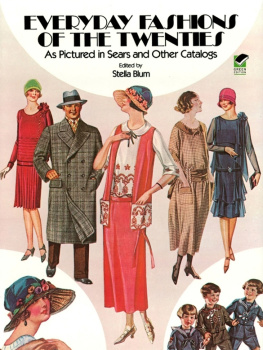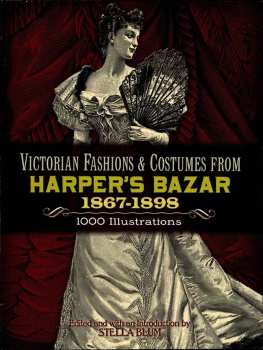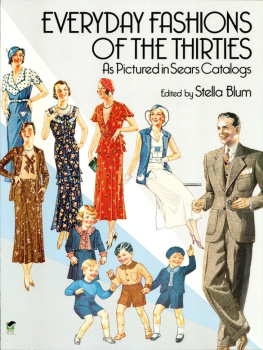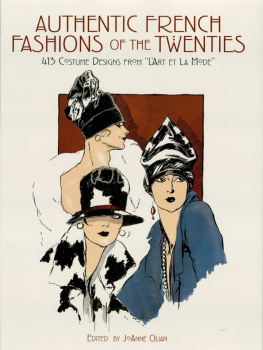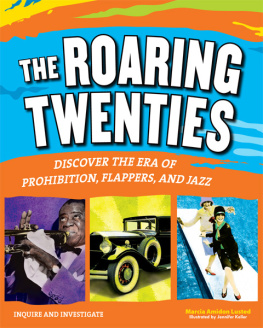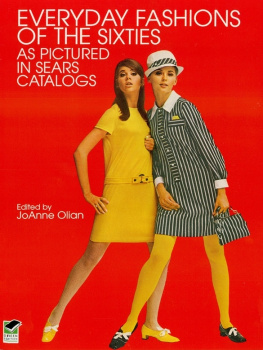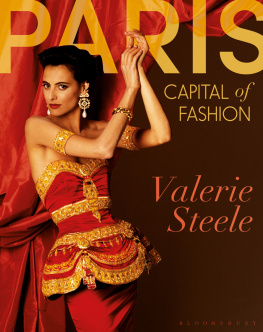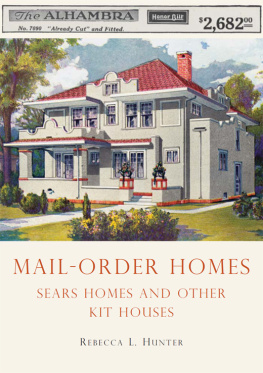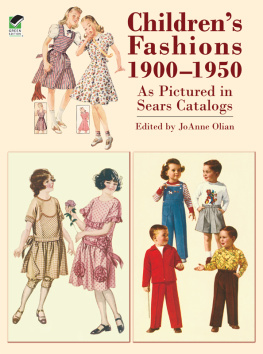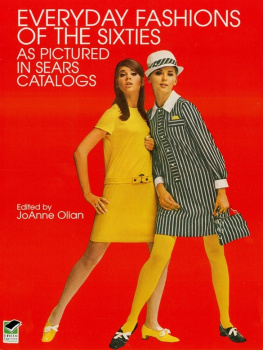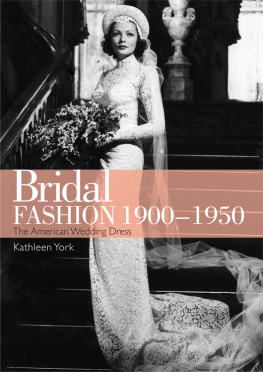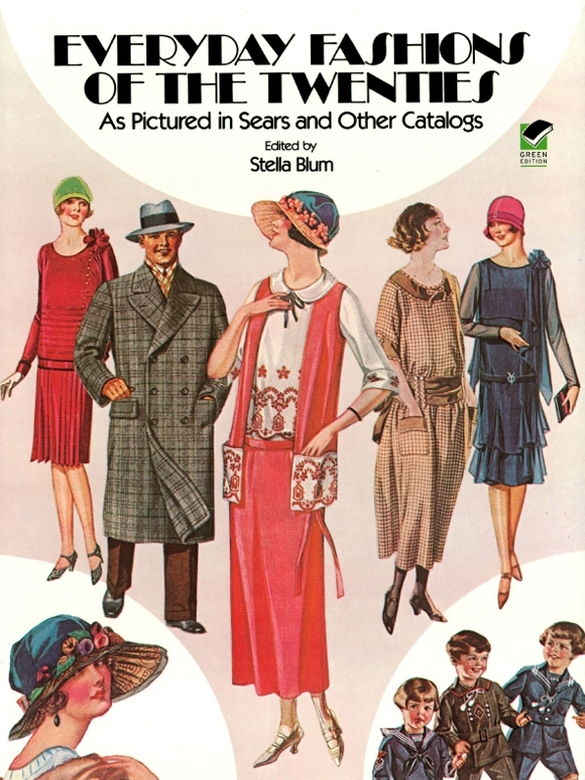HISTORIC ENGLISH COSTUMES AND How TO MAKE THEM, Talbot Hughes. Introduction by Kristina Seleshanko. (0-486-46985-9)
MEDIEVAL AND RENAISSANCE FASHION: 90 FULL-COLOR PLATES, Raphal Jacquemin. (0-486-45776-1)
PICTORIAL ENCYCLOPEDIA OF HISTORIC COSTUME: 1200 FULL-COLOR FIGURES, Albert Kretschmer and Karl Rohrbach. (0-486-46142-4)
COSTUME DESIGN IN THE MOVIES: AN ILLUSTRATED GUIDE TO THE WORK OF 157 GREAT DESIGNERS, Elizabeth Leese. (0-486-26548-X)
ACCESSORIES OF DRESS: AN ILLUSTRATED ENCYCLOPEDIA, Katherine Lester and Bess Viola Oerke. (O-486-43378-1)
THE CORSET AND THE CRINOLINE: AN ILLUSTRATED HISTORY, W. B. Lord. (O-486-46186-6)
JAPANESE KIMONO DESIGNS, Shjir Nomura and Tsutomu Ema. (0-486-44426-0)
TUDOR COSTUME AND FASHION, Herbert Norris. (0-486-29845-0)
MEDIEVAL COSTUME AND FASHION, Herbert Norris. (0-486-40486-2)
EVERYDAY FASHIONS, 1909-1920, As PICTURED IN SEARS CATALOGS, Edited by JoAnne Olian. (0-486-28628-2)
CHILDRENS FASHIONS 1900-1950 As PICTURED IN SEARS CATALOGS, Edited by JoAnne Olian. (0-486-42325-5)
VICTORIAN AND EDWARDIAN FASHIONS FROM LA MODE ILLUSTRE, JoAnne Olian. (0-486-29711-X)
EVERYDAY FASHIONS OF THE SIXTIES As PICTURED IN SEARS CATALOGS, Edited by JoAnne Olian. (0-486-40120-O)
EVERYDAY FASHIONS OF THE FORTIES As PICTURED IN SEARS CATALOGS, Edited by JoAnne Olian. (0-486-26918-3)
80 GODEYS FULL-COLOR FASHION PLATES: 1838-1880, JoAnne Olian. (0-486-40222-3)
EVERYDAY FASHIONS OF THE FIFTIES As PICTURED IN SEARS CATALOGS, Edited by Joanne Olian. (O-486-42219-4)
FULL-COLOR SOURCEBOOK OF FRENCH FASHION : 15TH TO 19TH CENTURIES, Pauquet Frres. (O-486-42838-9)
A DICTIONARY OF COSTUME AND FASHION: HISTORIC AND MODERN, Mary Brooks Picken. (0-486-40294-0)
AN ILLUSTRATED DICTIONARY OF HISTORIC COSTUME, James Robinson Planch. (0-486-42323-9)
60 CIVIL WAR-ERA FASHION PATTERNS, Kristina Seleshanko. (0-486-46176-9)
THE MODE IN HATS AND HEADDRESS: A HISTORICAL SURVEY WITH 198 PLATES, R. Turner Wilcox. (O-486-46762-7)
THE MODE IN FOOTWEAR: A HISTORICAL SURVEY WITH 53 PLATES, R. Turner Wilcox. (O-486-46761-9)
THE MODE IN COSTUME: A HISTORICAL SURVEY WITH 202 PLATES, R. Turner Wilcox. (O-486-46820-8)
EVERYDAY DRESS OF RURAL AMERICA, 1783-1800: WITH INSTRUCTIONS AND PATTERNS, Merideth Wright. (O-486-27320-2)
See every Dover book in print at www.doverpublications.com
Part One: 19191924
In 1919, people in Europe and America, exhausted and depleted by World War I, longed to return to what they considered normalcy, to the way of life they had known before the war. Fashions reverted to those of 19131914, as though they had only been dropped for the duration. A new view of how women should dress had begun around 1909 and the course toward freedom, youth and equality was established even before 1914. By 1920, after a few steps backwards, the movement was accelerated by the experience and changes brought on by the war. During the next several years, the fashion ideal became younger and younger and proceeded to divest itself of many of the physical and mental trappings of the nineteenth century.
Growing urbanization, increased affluence, shorter working hours and paid vacations allowed for more leisure time and extra energy. As a result, interest in sports escalated, necessitating a whole range of special clothes designed for active and spectactor sports. Gradually this freer concept of dressing crept into daywear. Clothes became simpler and lighter in weight. Feminine curves, long a symbol of a womans frailty, were negated by the fashion for the new streamlined vertical lines. These six years were essentially a transitional period in womens fashions. The new style was to emerge fully in 1925.
By 1919 pregnancy was no longer veiled in gowns for dshabill or at-home robes. Maternity dresses designed in the styles of the period, along with maternity corsets, were illustrated graphically with explicit text explaining their function and virtues (page 7).
When one compares the fashions shown by Sears, Roebuck and Co. during this period with those in a French magazine such as LArt et la Mode or with the American Vogue or Harpers Bazaar, it is interesting to note that there is only about a one-year lag in the overall aspect of the mail-order fashions. Yet, although the styles were not exactly the dernier cri or as handsomely presented as those in the high-fashion magazines, many fashions shown by Sears in 191924 reveal a surprising amount of chic and elegance. Not all of the clothes were inexpensive. Some coats and suits sold for almost $50, while some better dresses were priced over $30. Considering the purchasing power of a dollar in those days, it is apparent that those who could afford these prices were not confined to large cities and that mail-order catalogs catered not only to the rustic needs of farmers or the meager purses of the poorer classes. During these six years, the range of cost and taste was rather wide; the fashions presented must have been aimed at a broad spectrum of Americans.
1919
(pages 5-14)
The hobble skirt of the prewar period took on the peg-top look (pages 5 and 6) and the 1913 barrel form was shown along with pyramid shapes popular in 191516. The waistlines were either high or undefined. The bust retained the earlier low monobosom look. By our standards, the figure was quite full. The use of decorations, such as a proliferation of buttons, tassels and braid, was also a holdover from past fashions.
Although the current silhouette actually required little constriction, women, except for the most liberated, continued to wear corsets. There were even corsets for children up to 12 years (page 8). White cotton, trimmed with eyelet and lace, was popular for lingerie. Very pointed high shoes, laced or buttoned, with solid or spat tops and Louis or military heels were preferred. Stockings, which showed only when pumps were occasionally worn, were generally black or dark gray, although white was sometimes worn with white shoes. Hats, which had large crowns to accommodate long hair, were worn low, just above the eyebrows.
Male fashions reminiscent of the Edwardian styles are shown on models with large, square-jawed heads, and hair neatly plastered down. Their clothes had narrow shoulders and were slightly high-waisted, like the womens fashions. For sports there were Norfolk jackets and knickerbockers for golf or hiking and suits for riding.
The cosmetics available were limited to rouge, face powder and discreet lip rouge. One could buy a pencil to darken eyebrows, lashes and, for the men, beards and mustaches. For the nails there were cuticle removers, nail whites and polishing pastes.
1920
(pages 15-34)
Skirts became a little shorter, figures somewhat slimmer, bosoms smaller and the waistline was more naturally placed. Suits appeared sleeker and more tailored. Middy and over-blouses, now an important item, figured prominently in modified forms into the 1930s. Lingeriepetticoats, chemises, bloomers were shown in a profusion of colored silks in purple, flesh, blue, green, plum and black. Bandeaux or brassieres began to displace the camisole.
Automobile dusters were included in the menswear section. Although jackets for youths and boys were similar to those for men, suits for boys 9 to 17 were shown with knickerbockers.
1921
(pages 35-48)
There was a further simplicity this year. Dresses on page 38 were designed to fall in an unbroken line from shoulder to hem. Worn loose, slightly belted at the normal waist, this was to be the silhouette of most of the decade. Although dresses remained below calf length, coats became shorter. Heavy trimming began to disappear. Some hair was obviously cut but was kept soft-looking with side curls (page 38). High shoes and spats were still worn but there was in increase in the popularity of pumps and oxfords. Stockings remained dark. The Japanese-style kimono as well as sleeping suits (pajamas for women) made their appearance. Mens outerwear included chesterfields, town ulsters and reversible rubber interlined raincoats. Shirts with detachable collars were popular. The separate collars could be either stiff or soft, and some, called rubber collars, were made of celluloid.

